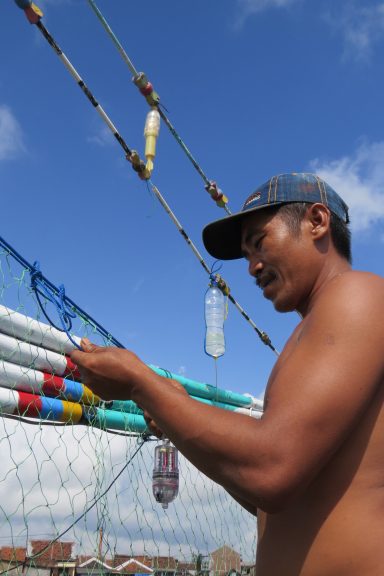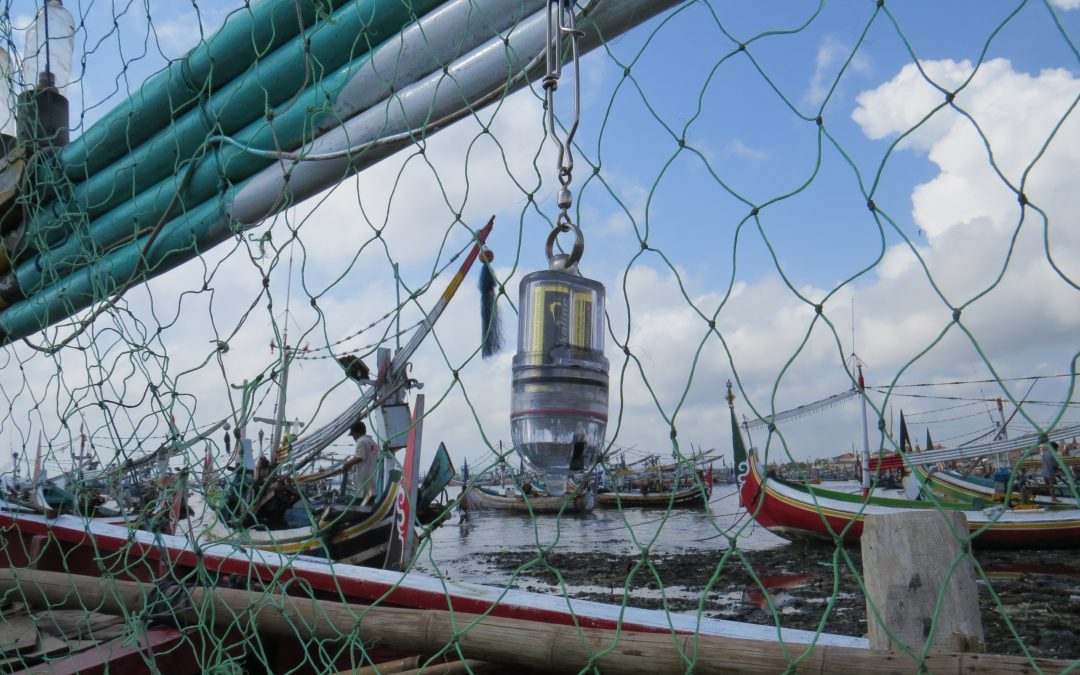Following our project introduction workshop, many of the fishermen in Muncar have expressed interest in learning more about bycatch mitigation technologies. Not only because they are very familiar with the problems that unwanted bycatch can cause, but also because the swordfish lights are a new technology that they are interested in trying. This enthusiasm was very evident during our workshop, when more than 75% of attendants expressed interest in participating in our pilot trial.
Salihin, one of the participants, said “I hope the lights can prevent mobula rays from becoming trapped in my nets. It will reduce my costs of repairing the nets, and also leave more space for my target fish such as marlin, king mackerel and sailfish”.
Two days after the training workshop, we visited the 20 fishers participating in the trial. In addition to building good relationships, we aimed to provide further guidance on installing the swordfish lights to their fishing gear. This visit also helped us to check whether participants are completing their logbooks correctly.
We began to receive some feedback from participants about the compatibility of these lights with their fishing gear, and together we discussed issues and found solutions. Several of the fishers have decided to make small modifications to the way the lights attach to their nets, and this should make the devices easier to deploy.
Ahmad was the first participant to use the lights while fishing, and said, “they are easy to use, and they also brighten my nights fishing as I can see the lights lined up along my nets”.

Sanusi as one of the trial fisherman attach the light to his gillnet
We are now one month into the pilot trial, and we have just completed a follow-up survey to assess the technical performance of the lights. The participants all report that the lights are a suitable size and design for their fishing nets, and are easy to use and maintain.
Sanusi is another fisherman who is using the swordfish lights “I think I can already notice that those of us who are using the lights have less bycatch. I am grateful for this opportunity to experiment with this technology, it is a new concept for me.”


